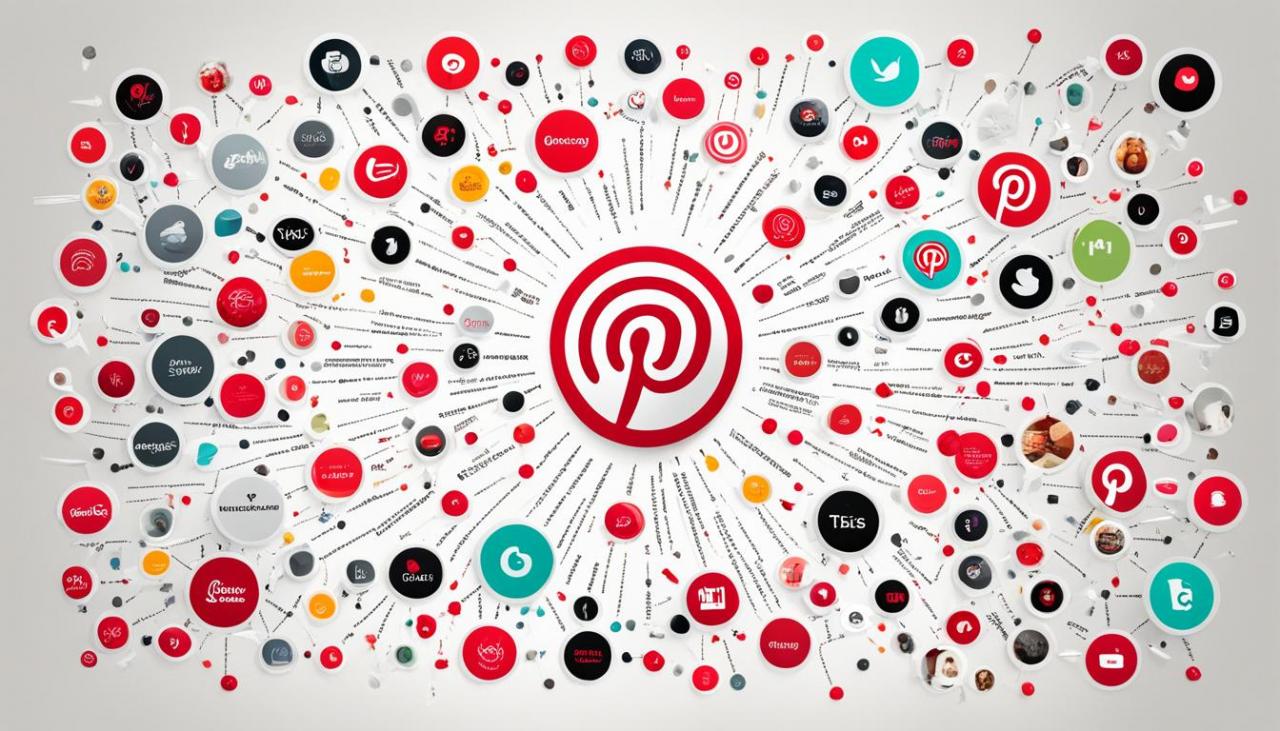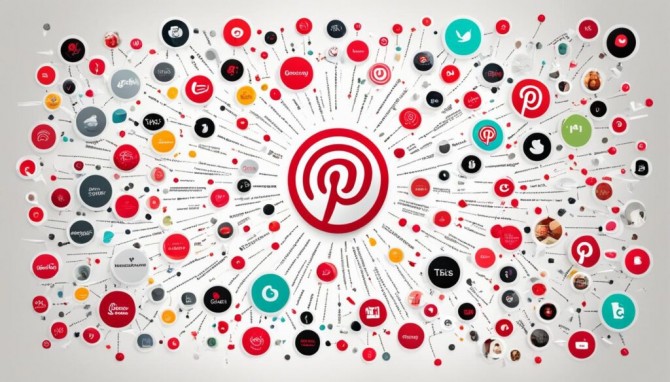Who Owns Pinterest? – Pinterest Company History
Pinterest, Inc. is a popular social media service and image sharing platform that allows users to discover and save information, ideas, and inspiration through images, GIFs, and videos. Over the years, Pinterest has become a household name and has transformed the way people search for and save visual content. But who owns this influential platform?
Founded in March 2010 by Ben Silbermann, Paul Sciarra, and Evan Sharp, Pinterest has grown significantly since its inception. Silbermann, an entrepreneur with a passion for collecting and organizing things, came up with the idea for Pinterest while working at Google. He noticed the lack of a user-friendly platform to save and categorize photos and decided to create one himself.
In the early days, Pinterest struggled to gain traction. However, with the help of early investors and improved user experience, it gradually gained popularity. The platform’s unique concept of visual bookmarking resonated with millions of users worldwide, leading to exponential growth.
Pinterest’s first major funding came in 2011 when it secured $10 million from a group of investors led by Jeremy Levine of Bessemer Venture Partners. This investment allowed Pinterest to expand its operations and enhance its technological infrastructure. In subsequent years, Pinterest received additional funding, with the total investment reaching $764 million by 2017.
As Pinterest attracted more users and continued to evolve, it caught the attention of venture capital firms and other major tech players. In 2012, Andreessen Horowitz poured $27 million into the company, valuing it at $200 million. This funding round marked a significant milestone for Pinterest, placing it firmly on the map as a promising social media platform.
Pinterest’s growth didn’t go unnoticed by internet giants either. In 2013, Japanese e-commerce company Rakuten acquired a 15% stake in Pinterest for $50 million, valuing the company at $300 million. This partnership helped Pinterest expand its reach globally, particularly in Asia.
Meanwhile, Pinterest continued to attract funding from various sources. In 2014, it secured $200 million in a funding round led by SV Angel, valuing it at $5 billion. This round marked Pinterest’s entry into the coveted “unicorn” club – start-ups valued at $1 billion or more.
A significant milestone came in 2017 when Pinterest achieved profitability, a testament to its sustainable business model and growing user base. This achievement enabled the company to embark on ambitious expansion plans and innovative initiatives.
Pinterest filed for an initial public offering (IPO) in 2019, signaling its transition from a privately held company to a publicly traded one. In April of that year, it went public on the New York Stock Exchange under the ticker symbol “PINS.” The IPO raised $1.4 billion, valuing Pinterest at $12.7 billion and making it one of the most high-profile tech IPOs of the year.
Today, Pinterest is a publicly traded company, and its shares are available for trading on various stock exchanges. The company’s ownership is now distributed among a wide range of institutional and individual investors. Major stakeholders include Vanguard Group, BlackRock, and First Trust Advisors.
As Pinterest continues to grow and innovate, its impact on the marketing world is undeniable. Many businesses now recognize the platform’s potential as a powerful marketing tool, leveraging its millions of active users and visually appealing content. Pinterest marketing has become a prominent strategy for increasing brand visibility, driving website traffic, and generating leads.
In recent years, Pinterest has introduced various features and tools to facilitate marketing efforts for businesses. These include Pinterest Ads, Promoted Pins, and Pinterest Analytics, allowing businesses to reach their target audience more effectively and measure the success of their campaigns.
With a user base of over 450 million and counting, Pinterest remains a dominant force in the world of visual discovery and inspiration. As the company continues to expand its offerings and attract more users, the question of who owns Pinterest may become less relevant than the impact it has on shaping the future of online marketing and e-commerce.

Pinterest Marketing: A Promising Strategy for Businesses to Reach Over 5 Billion Global Social Media UsersIn the midst of a record-breaking year for digital milestones, a new report titled “Digital 2024” has revealed that the global number of social…
Pinterest Marketing: A Promising Strategy for Businesses to Reach Over 5 Billion Global Social Media Users
In the midst of a record-breaking year for digital milestones, a new report titled “Digital 2024” has revealed that the global number of social media users has exceeded a staggering 5 billion. This information, which encompasses data from various online platforms and smart devices, has caught the attention of businesses worldwide. Among the many social media giants, Pinterest has emerged as a promising marketing tool for companies aiming to tap into this vast user base.
Pinterest, a visual discovery engine, enables users to create and curate virtual pinboards filled with images and ideas that cater to their interests. With its emphasis on visual content, this platform has gained immense popularity among individuals seeking inspiration for various aspects of their lives, including fashion, home decor, recipes, and travel. As a result, Pinterest has become an attractive platform for businesses looking to engage with a highly motivated and receptive audience.
Recent data shows that Pinterest boasts over 400 million active users each month, making it a significant player in the social media landscape. Moreover, the platform’s user base is predominantly female, with women comprising approximately 60% of all Pinterest users. This demographic alignment has made Pinterest an ideal channel for businesses targeting female consumers, who have been shown to be influential decision-makers in various industries.
The unique nature of Pinterest’s user experience offers businesses ample opportunities to showcase their products and services in creative and visually appealing ways. Through carefully crafted pins, companies can communicate their brand message, highlight their products, and drive traffic to their websites. For instance, a fashion retailer can create pins featuring their latest collection, linking directly to the corresponding product pages on their website for seamless shopping. In addition, Pinterest’s “Shop the Look” feature allows businesses to tag specific products within an image, providing users with a convenient purchasing experience.
One of the key advantages of utilizing Pinterest as a marketing tool is its long-lasting impact. Unlike other rapidly moving social media platforms, Pinterest pins have a significantly longer shelf life. Pins can resurface and gain traction even months after they were initially pinned, increasing the potential for organic reach and engagement. This unique characteristic makes Pinterest an attractive option for businesses seeking a sustained marketing strategy.
In recent years, Pinterest has continuously enhanced its marketing tools to better serve businesses. The platform offers various advertising formats, such as Promoted Pins and Shopping Ads, which allow companies to increase their visibility and reach a wider audience. Pinterest’s advanced targeting options, including demographic targeting and interest-based targeting, enable businesses to deliver their content directly to their desired audience, maximizing the effectiveness of their marketing campaigns.
Furthermore, Pinterest has recently introduced Pinterest Trends, a valuable tool that provides insights into the popularity of search terms within the platform. With this feature, businesses can identify emerging trends and consumer interests, allowing them to tailor their content and stay ahead of the competition. Pinterest Trends also offers a valuable resource for businesses planning their marketing strategies, providing data-driven insights into the optimal timing for launching campaigns.
As businesses around the world recognize the potential of Pinterest marketing, it is anticipated that more companies will allocate resources and invest in this platform to capitalize on its vast user base and unique features. With over 5 billion global social media users, businesses cannot afford to overlook the opportunities Pinterest offers for reaching and engaging with their target audience.
In conclusion, as social media continues to dominate our digital landscape, Pinterest has carved out a niche by offering a visually appealing and inspiring platform for its global user base. Businesses, particularly those targeting female consumers, can leverage Pinterest’s unique features and marketing tools to effectively communicate their brand message, showcase their products, and drive traffic to their websites. As the world of digital marketing evolves, Pinterest marketing is poised to play an increasingly important role in helping businesses thrive in an ever-competitive market.


